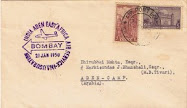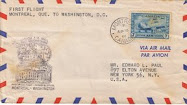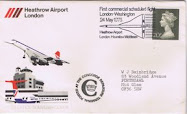It was not until the invention of the gasoline-powered engine in 1896 that practical airships could be built. In 1898, the Brazilian Alberto Santos-Dumont was the first to construct and fly a gasoline-powered airship.
 Arriving in Paris in 1897, Alberto Santos-Dumont first made a number of flights with free balloons. He thought of combining the De Dion engine that powered his tricycle with a balloon, which resulted in 14 small airships that were all all gasoline-powered. His No. 1 airship first flew on September 18, 1898.
Arriving in Paris in 1897, Alberto Santos-Dumont first made a number of flights with free balloons. He thought of combining the De Dion engine that powered his tricycle with a balloon, which resulted in 14 small airships that were all all gasoline-powered. His No. 1 airship first flew on September 18, 1898. Between 1898 and 1905, he built and flew 11 dirigibles. He would glide along Paris boulevards at rooftop level in one of his airships, commonly landing in front of a fashionable outdoor cafe for lunch. On one occasion he even flew an airship early one morning to his own apartment at No. 9, Rue Washington, just off Avenue des Champs-Élysées, not far from the Arc de Triomphe.
The zenith of his lighter-than-air career came when he won the Deutsch de la Meurthe prize. The challenge called for flying from the Parc Saint Cloud to the Eiffel Tower and back in less than thirty minutes. The winner of the prize needed to maintain an average ground speed of at least 22 km/h (14 mph) to cover the round trip distance of 11 km (6.8 miles) in the allotted time.
On October 19, 1901, after several attempts, Santos Dumont succeeded in using his dirigible Number 6. Santos Dumont was awarded the prize as well as the prize money of 125,000 francs. In a charitable gesture, he donated 75,000 francs of the prize money to the poor of Paris. The balance was given to his workmen as a bonus. An additional matching 125,000 francs was voted to him along with a gold medal by the government of his native Brazil.

Santos Dumont's aviation feats made him a celebrity in Europe and throughout the world. The public eagerly followed his exploits. He won several more prizes and became a friend to millionaires, aviation pioneers, and royalty. In 1904, he went to the United States and was invited to the White House to meet U.S. President Theodore Roosevelt. He remains to this day, a prominent folk hero in his native Brazil.
His primary interest soon turned to heavier than air aircraft. See my earlier post on this.
On October 19, 1901, after several attempts, Santos Dumont succeeded in using his dirigible Number 6. Santos Dumont was awarded the prize as well as the prize money of 125,000 francs. In a charitable gesture, he donated 75,000 francs of the prize money to the poor of Paris. The balance was given to his workmen as a bonus. An additional matching 125,000 francs was voted to him along with a gold medal by the government of his native Brazil.

Santos Dumont's aviation feats made him a celebrity in Europe and throughout the world. The public eagerly followed his exploits. He won several more prizes and became a friend to millionaires, aviation pioneers, and royalty. In 1904, he went to the United States and was invited to the White House to meet U.S. President Theodore Roosevelt. He remains to this day, a prominent folk hero in his native Brazil.
His primary interest soon turned to heavier than air aircraft. See my earlier post on this.











2 comments:
thanks for this nice post
The Santos-Dumont airship dipicted is not his No 6, in which he won the prize. Rather, it is of No 5 - a previous similar airship, which he also flew around the Eiffel tower. See http://www.pbs.org/wgbh/nova/space/my-first-balloon-ascent.html
Hats off to the people who got it right. Note the small differences in envelope form and rudder shape!
Cheers, Charles
Post a Comment